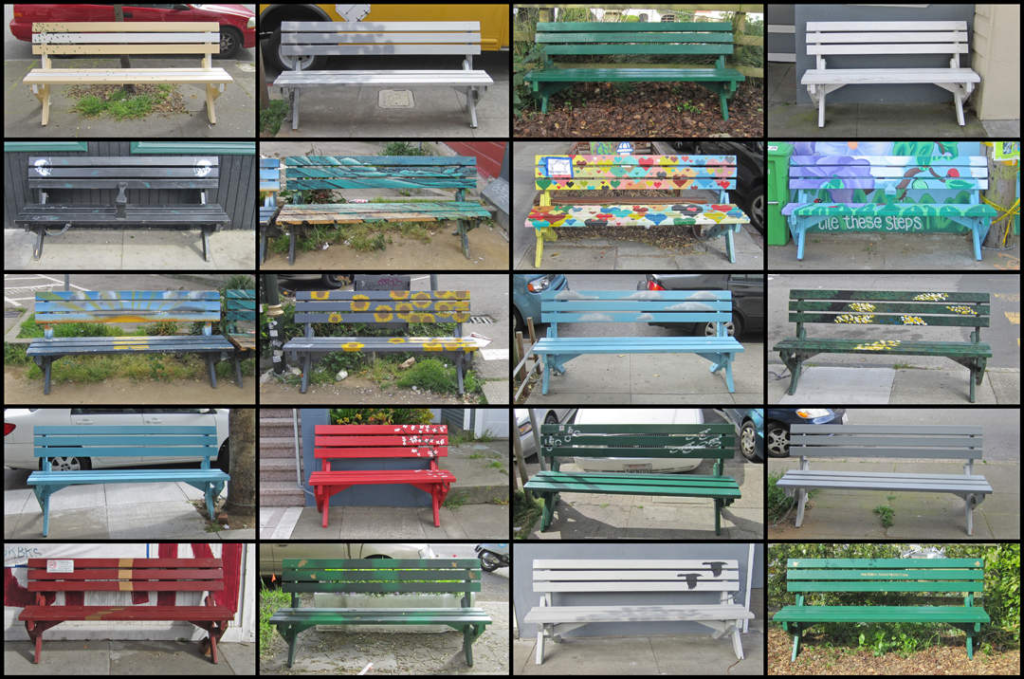
The “Public Bench Project” is a fascinating initiative in San Francisco, which bypasses some of the typical bureaucracy involved in public infrastructure. This project places benches across the city to build community by giving people a place to meet and rest. It promotes the use of public spaces and aims to enhance neighborhood bonds. The project even provides templates and instructions for those who wish to build their own benches, fostering a community-driven approach to public seating
On the whole, we tend to think of public space as something we can all share but that only cities and their agencies can modify. Engineer Chris Duderstadt of the Public Bench Project takes a different view. He has been building benches and putting them out in public for 40 years. In fact, his first such civic contribution is still standing (or sitting) to this day. His organization offers seats for free to people who have a good publicly accessible place in mind. Donations are welcome but no one is turned away for lack of funds (“We’ll just give it to you – honestly!”).

It can be arduous to convince a city to make changes to public infrastructure, which is part of the genius of the Public Bench Project. Some of their benches have permits but others slip into loopholes — in certain cases, for instance, public benches do not require a permit (e.g. if they are not permanently bolted to the ground and if they leave sufficient clearance for walkers to pass them on the sidewalk). In other instances, the project team gets permits in bulk in advance. Thus, unlike many illicit tactical urban interventions, these benches can become long-term assets to public spaces without all the bureaucracy.

An engineer by trade, Duderstadt has developed his bench designs over time, evolving steel-framed and fully wooden variants over the years. Various iterations can be found across San Francisco — to date, he has placed 77 benches in the city, inspired in part by a long European tradition of putting public benches in front of private homes.
“The goal,” he explains “is simply to provide comfortable places for the weary to rest. Though I have been active in promoting public space –being on a number of boards and committees — just making benches and placing them is often much more rewarding.”

Sometimes he also adds art or graphics, but often this is done by the steward or “host” — the person who places the request for a given bench with a specific location in mind. The Public Bench Project encourages people to care for the benches they host by decorating them, making it clear they are for public use and attaching contact information to gather neighborhood feedback. Generally, a temporary bench is placed to gauge local sentiment, then slowly becomes permanent.
In some cases, Duderstadt collaborates with other parties, like students or scout groups, to design or build benches for specific places. He also has his own workshop but notes that the “sturdy and comfortable” all-wood design is simple enough to build with a “hand drill and jigsaw.”
Benches are a wonderful way to contribute to the neighborhood. A bench builds community by giving people a place to meet friends and neighbors; provides a rest space for tired walkers, the elderly, and others; adds an artistic piece of furniture for all to see; and lets the world know that you care about community.
Chris Duderstadt
Founder of the Public Bench Project
As with any endeavor of this sort, the Public Bench Project has its occasional detractors. Some say public seating encourages “loitering,” to which Duderstadt responds that “lingering” is a good thing — it builds communities and should be encouraged. Normally, no one complains and the city leaves the benches alone, but he does advise people to chain the seats to something (like a post) lest they “walk away.”
Duderstadt says he is always looking for new places to put benches, so those interested in taking part should get in touch. His website also contains templates and instructions for those who wish to build their own benches (or perhaps run similar programs in other cities).
Original article on 99Pi Website